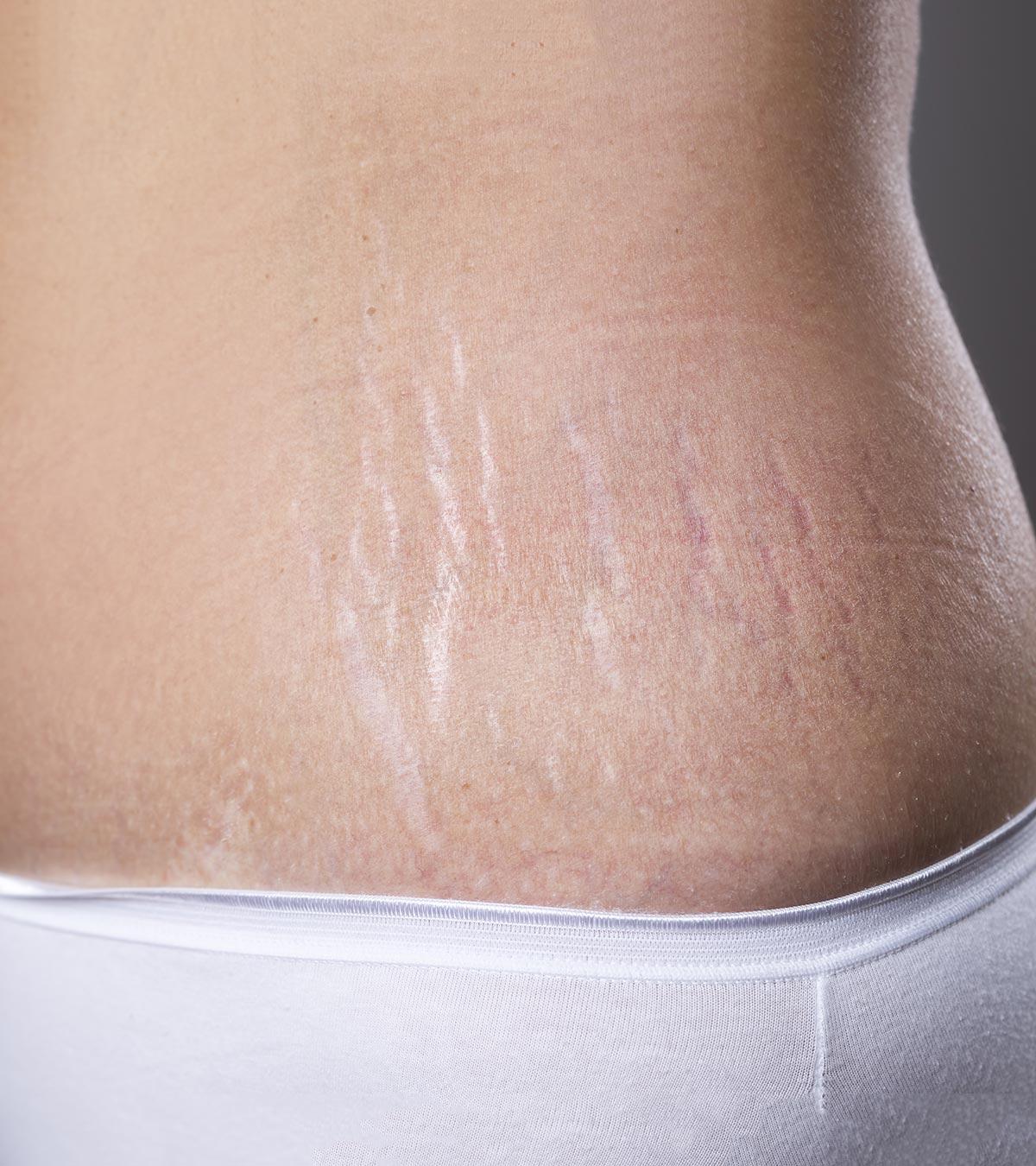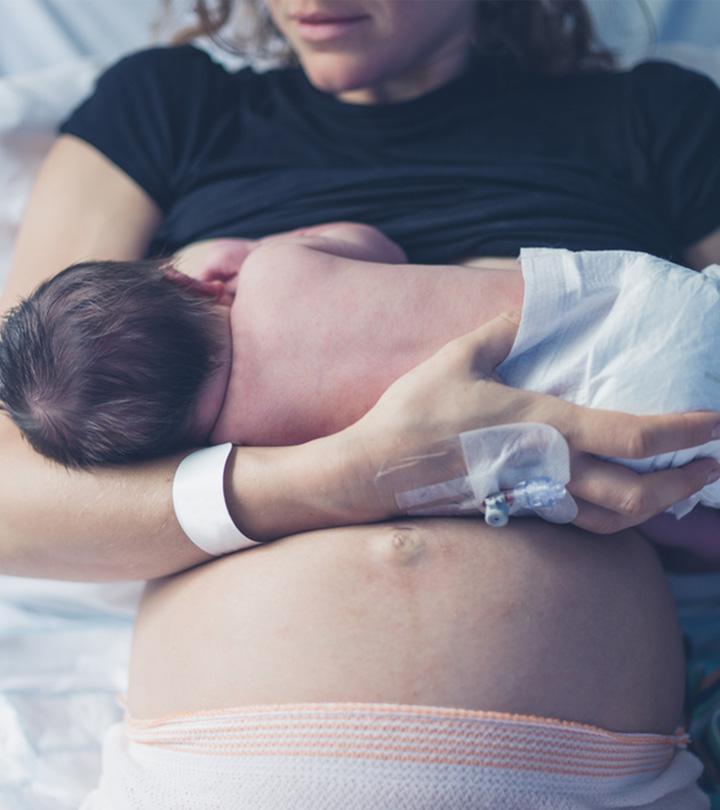
Image: Shutterstock
You will need to be extra careful about your body after delivering a child through a C-section. Reconsidering the sleeping positions after a C-section is one such change to help the surgery incision heal better.
Adequate sleep in the right sleeping positions after childbirth is essential for the body to return to its pre-pregnancy state. Read this post to understand the importance of sleep after a C-section and some comfortable sleeping positions.
The Importance Of Sleeping Right After A C-Section
The right sleeping position keeps you comfortable and reduces any pressure or stress at the site of surgery. It also helps you get off the bed comfortably, with reduced discomfort, enables better breathing and sound sleep. It lowers the strain on the abdominal muscles, and in turn, reduces any risk to the incision.
Why Is It Difficult To Sleep Well After A C-Section?
Image: IStock
Several institutes conducted an extensive meta-analysis of observational studies, revealing that 67.2% of postnatal women experienced poor sleep quality. The increased hormonal levels and abdominal volume during pregnancy and postpartum period affect the airways, thereby, causing a condition called Obstructive Sleep Apnea (OSA). OSA could result in breathing difficulties and collapsing of the airways during sleep. These issues, combined with considerable pain of the cesarean, make it difficult to sleep.
What Are The Best Positions To Sleep In After A Cesarean Delivery?
The following are the possible ways you can try sleeping in after a c-section. Whether or not one works for you depends on the level of ease and comfort you develop with the position.
- On your back: In most cases, this is the comfortable position for the first few days and weeks after the cesarean. There is no pressure on the incision when you sleep on your back. You may also put a pillow below the knees for extra comfort. The downsides include difficulty in getting off the bed or sitting up as it can put some strain on the incision site. It is also not the right position to consider if you have abnormal blood pressure. While getting up from this position, it would be better for you to roll onto your side and then sit up followed by standing up if needed.
Image: IStock
- On your side: This is a more comfortable position after delivery. There is no pressure built on the incision site, and it is less painful while getting off the bed. Sleeping on the left helps in optimal blood flow and improves digestion. You may use pillows to support your abdomen and hips. Also, it is the best position to consider if you have blood pressure problems.
Liesel Teen, BSN, RN, a labor and delivery nurse and the founder of Mommy Labor Nurse from Raleigh, North Carolina, says, “Avoid sleeping on your stomach in the first several days and weeks following your C-section. A side-lying position should also be avoided in the immediate recovery period. Basically, you have to find a position that keeps pressure off your abdomen and your incision. In the first few days, the safest and most comfortable sleeping position will likely be on your back at a slight incline. Once your incision isn’t as sore, you can transition to side sleeping.”
- Elevating your upper body: Prop your upper body with several pillows so that the whole body is raised. It aids in better breathing and also eases sleeping, especially if you are experiencing OSA. If you are not comfortable elevating the entire body, use pillows between your knees and under your hips.
 Quick fact
Quick factTeen adds, “Many women find comfort in using pillows to prop up their upper bodies into a semi-reclined position. Others find it comfortable to elevate their legs with a rolled blanket or pillow. Just make sure you don’t have your upper body propped up too high to avoid pressure on your incision.”
Image: Shutterstock
- Upright: If none of the above positions work, you could try sleeping while sitting on a couch or chair with several pillows for support. This is a temporary sleeping position, but makes your job easier when breastfeeding or getting off from sleep. Recliners can provide good rest during the first two weeks.
Tips To Improve Your Sleep While Recovering From C-Section
You require plenty of sleep to recover quickly from the surgery. Here is what you can do to sleep better.
- Stick to the pain medications your doctor might prescribe for a sound sleep. Unless prescribed by a doctor, do not take any sleep medication as it might go through the breast milk and also might affect your mental health.
 Expert says
Expert says- Begin with light exercises and movements with your maternity healthcare provider’s approval. Short walks and light stretching activities boost your blood circulation, tone muscles, lower stress and speed up the healing process, thus promoting good sleep.
Image: Shutterstock
- Having a well-balanced diet is also essential for quick healing. Include foods rich in vitamin C and omega-3 fatty acids to decrease inflammation and promote recovery. It will, therefore, help you sleep well.
- Drink enough water and add fiber to your diet to keep constipation away. A sensitive tummy will disturb your sleep. Your doctor might also prescribe stool softeners for smooth bowel movements, and it will, therefore, improve your sleep.
Image: Shutterstock
- Do not move out of the bed often, at least for the first few weeks. Get help from your partner or family to get your baby when needed for breastfeeding.
Next, we answer a few commonly asked queries.
Frequently Asked Questions
1. How to safely get out of bed after a c-section?
Try rolling onto one side while you are getting out of bed as it requires very less effort. When you need support, ask a family member to help you get in and out of bed. You can also use your elbow to support and push yourself to a comfortable seated position with your legs hanging over the side of the bed. Put your feet on the floor first and rest for a while before you stand.
2. Can you sleep on your stomach after c-section?
You cannot sleep on your stomach immediately after a c-section as the surgical site will be sore, and any pressure on it worsens the pain. Your body will respond when the pain subsides, and can sleep on your tummy when you feel comfortable. Teen recommends, “You can run this by your OB provider or surgeon, but generally, it is recommended to avoid sleeping on your stomach for at least six weeks after a C-section. Usually, women return to their health provider’s office around six weeks for a postpartum check-up. At this time, they will examine your incision and let you know if it’s safe to sleep on your belly.”
3. Should we not use a pillow after a C-section?
Pillows can help ease many discomforts after cesarean section deliveries. You may use a pillow to elevate your head from your body to have better air circulation in the airways after C-section. Elevating the head with pillows can also prevent obstructive sleep apnea (OSA). You may use pillows to support your back while sitting on the bed after C-section. They can also be used to support arms while breastfeeding the baby (1).
Finding the right sleeping position after a C-section birth might take some time since the amount of ease and familiarity you acquire with the position determines whether or not it will work. Also, keep in mind that the discomforts will only last a few days till your pain goes away, and soon you will be able to tell when your body is ready to sleep in any posture. You may also begin light workouts, eat a well-balanced diet, drink plenty of water, and have a happy attitude to help speed up your recovery.
Infographic: Reasons And Tips For Sleep Issues After C-Section Delivery
Unable to achieve quality sleep after C-section? Well, it is one of the several concerns most women experience postpartum. Firstly, it is crucial to check if your sleep issue is due to a medical reason (with a doctor) and follow practical measures. This infographic provides some of these potential reasons and tips to sleep well after a C-section. Illustration: Momjunction Design Team
You may feel discomfort while sleeping after undergoing a C-section. Watch this informative video where you are guided by a gynecologist on how to get a good night’s rest and recover quickly after a C-section.
Which sleeping position was more comfortable for you? Share your experiences with other new moms in the below comment section.
Disclaimer: The sleeping positions and advice are only for informational purposes, and they do not intend to be alternatives for medical advice.
Key Pointers
- Right sleeping position after C-section reduces pain and helps to avoid pressure on the surgical site.
- Lying on the back or sides and keeping the legs elevated are the best sleeping positions after C-section delivery.
- Safely getting off the bed, taking pain medication as prescribed, and beginning gentle exercises can also help recover faster after C-section.
Image: Stable Diffusion/MomJunction Design Team
References
- After Your Caesarean Section.
https://www.enherts-tr.nhs.uk/wp-content/uploads/2019/10/M-After-Your-C-Section-c-section_infoleaflet2014-1.pdf - Sebastian Zaremba et al.; (2015); Elevated upper body position improves pregnancy-related OSA without impairing sleep quality or sleep architecture early after delivery.
https://pubmed.ncbi.nlm.nih.gov/25905714/ - Managing Pain after Your Cesarean (C-section).
https://www.mombaby.org/wp-content/uploads/2018/03/Pain-management-after-c-section-3.5.18.pdf
Read full bio of Dr Sachchidananda Maiti
- Liesel Teen is a labor and delivery nurse and the founder of Mommy Labor Nurse, which offers birth classes to pregnant women. Liesel did her nursing degree at The University of North Carolina Wilmington and has eight years of experience as a bedside labor and delivery nurse.
 Liesel Teen is a labor and delivery nurse and the founder of Mommy Labor Nurse, which offers birth classes to pregnant women. Liesel did her nursing degree at The University of North Carolina Wilmington and has eight years of experience as a bedside labor and delivery nurse.
Liesel Teen is a labor and delivery nurse and the founder of Mommy Labor Nurse, which offers birth classes to pregnant women. Liesel did her nursing degree at The University of North Carolina Wilmington and has eight years of experience as a bedside labor and delivery nurse.
Read full bio of Dr. Ritika Shah
Read full bio of Reshmi Das


























